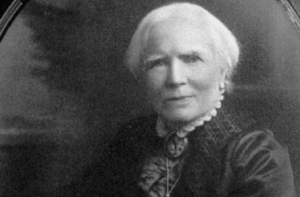Before Elizabeth Blackwell, there were no female doctors. Medical schools were full of men, and even the most private health matters a woman could have would be treated by a man. Though not explicitly forbidden, if a woman wanted to study medicine, she would be refused. That didn’t stop Elizabeth, who began thinking seriously about becoming a doctor when a dying friend told her she believed her suffering might not have been as bad if she had had a “lady doctor.” Elizabeth wasn’t even that interested in medicine, she was a teacher, but she also was looking for a way to spend her life that didn’t involve marriage. According to diary entries, it appeared she had bad experiences in that area, and wasn’t interested in more heartache. Her main drive, however, was to crack the glass ceiling.
Elizabeth was encouraged by her family to pursue medicine as a career. The Blackwells moved to England when Elizabeth was only 11, and she had enjoyed a better education than most girls. When she told her family she wanted to study medicine, her brothers drove her to North Carolina so she could get help from two physician friends. When she felt ready, she applied to every medical school in Philadelphia and New York. One professor told her jokingly if she dressed as a man, she would have gotten in. Geneva Medical School didn’t reject her outright; they had the student body vote on whether she should get in. It depended on a unanimous vote, and she got it. In 1847, Elizabeth became the first female student in medical school.

By 1857, the dispensary had grown and was known as the New York Infirmary for Women and Children. Her sister Emily had joined her, following directly in her footsteps as the second woman to go to medical school. The infirmary also served as a place for women to work in medicine through internships. Giving women opportunities was a passion for Elizabeth, and as she traveled through Europe, she learned a lot about social reforms related to sexual health, hygiene, and women’s rights. She published books that she wished she had when she was in school and provided advice to anyone who needed it.
By 1907, Elizabeth was teaching medicine in London at a school for women she helped found. After a bad fall, she needed to retire. Dr. Blackwell died in 1910. Her passion and drive to break barriers, what she called “a moral crusade,” overrode any dislike of medicine she might have possessed. Elizabeth was not only the first female physician in America, but she was also a good one, as well. If her friend had not made that comment about having a female doctor, who knows how history might have played out?




